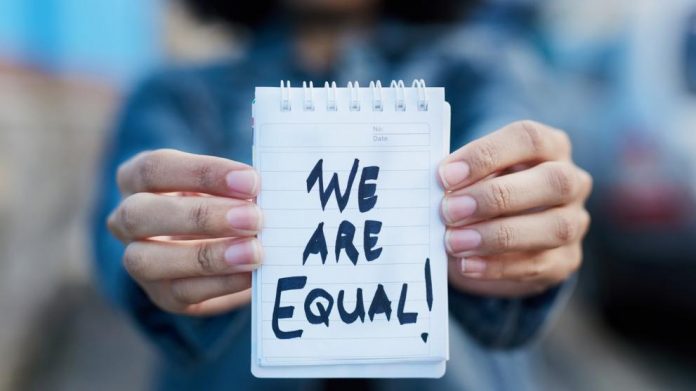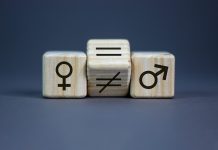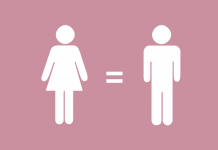This article has been written by Abhishek Kurian from National Law University, Odisha. In this article, he discusses and compares the Inequality between India and the United States of America.
Table of Contents
Introduction
A man in India enters his friend’s house and greets everyone with a warm shake hand or a hug. When he sees the woman of the house, he would join his hands together and say ‘Namaste’ which literally translates to “I bow to you”. This is a greeting which shows reverence to the person. This is also a sign of humility shown towards a God or Goddess.
That’s how the true culture of India has been at a point of time. In India, women are treated with respect and reverence comparable to that of God. However, this respect that is prevalent in the culture hardly materializes into equality between the two sexes. One cannot help but make this comparison of culture and equality in other countries, especially the ones which are developed nations and have focused on gender equality for a longer period of time, like the United States of America. This comparison is apt as these two nations happen to be the largest democracies in the world.
Can the culture of a country result in a disparity between the gender?
India has been a male-dominated country for years and until recently had failed to see women as equals, capable of operating in the same fields as men. This is because of the patriarchal culture that has been followed in the country, through religion, mythology and other common practices like dowry, sati, etc which had resulted in an inferior image of women altogether. Such a culture is still in the process of being eradicated as India is still a developing nation.
But what about other countries where such a culture wasn’t even existent? One should wonder if the problem of inequality is present in developed countries like the U.S. as well since a major factor for determining the development of a nation is their gender equality.
Unfortunately, even the U.S. is not reputed when it comes to its status of gender equality. While the reasons may be different, the U.S. has also often faced backlash for not improving the status of women equality. In fact, India has had a woman president and a woman prime minister as well, but the United States is yet to see the country ruled by a woman leader. Maybe India and the U.S. could both learn a few lessons in this regard from each other.
Status of inequality between the two sexes in India
For the purpose of this article, we shall be looking at 3 recognised factors or indices. They are:
Global Gender Gap
The Global Gender Gap is measured by the World Economic Forum. This is a measure of parity between both the genders and indicates the disadvantage in access to certain fields women have when compared to men.
It takes into account economic participation and opportunities, education, health and political empowerment. Hence, it can be relied upon as an important factor.
Status of India
According to the Global Gender Gap Index rankings of 2018 (see here for the report published in 2020), India stood 112th out of 153 countries with a score of 0.668. This implies that 66.8% of the women in India do not face a gender gap while the remaining population of women in India are still suffering from this gap that is hampering their growth. While India has seen a fall in its ranking, there has been an increase in its score. (Previous rank: 98, Previous score 0.601 )
Key points
- India ranked 18th in political empowerment which is a good sign when compared to many other countries.
- However, in the rest of the three areas, India has ranked lower than average.
Status of the United States
The U.S. ranked 53 with a total score of 0.724. It has closed the gender gap for 72.4% of the women population. The U.S. has seen a major drop in its rankings since 2006 standing at 23 in the last report.
Key points
- The U.S. has improved significantly in terms of educational attainment and its rankings have improved by more than 30 positions, previously being 66 and now 34.
- Another interesting point to note is that in terms of health and survival of women, it has faced a steep fall, dropping from Rank 1 to Rank 70 in this year’s rankings.
- The U.S. has fallen down in its rankings with the other 2 categories.
In which field is inequality most prevalent
This answer is different for both countries.
India
Economic participation and opportunity for women are ranked quite low. Its major failures have been with respect to wage equality and have been ranked way below average. Another point to note was the percentage of Legislators, officials and managers in which there is a massive gap. The percentage of women in this field covers only 13.7% while men cover the remaining 86.3% (see here).
India has although not fared poorly in terms of political empowerment but the statistics would show that there is a huge gap in the percentage of women in the parliament and holding ministerial positions. Only 14.4% of the seats in parliament are occupied by women and a mere 23% of the ministerial positions are held by women.
Although as previously mentioned, India has ranked high in this category and that is because in the last 50 years India was ruled for nearly 20 years by a woman, while most countries have not had a woman rule their nation.
United States of America
The report clearly stated that the United States’ progress toward gender parity has slowed down and has also shown an overall decrease in its ranking.
The maximum disparity between both the sexes is clearly visible in the field of political empowerment. It is also the area where it has performed the worst. The total percentage of seats occupied by women in the US parliament was nearly 24% and the total percentage of ministerial positions of women was almost 22%. Both are very low percentages for a country where the total number of women are more than men.
Additionally, the report also stated that out of the last 50 years, all of them were ruled by a male leader. While in all the other fields the U.S. has fared above average, what is alarming is the fact that its improvement has either been stagnant or its scores have gone down.
What are the laws that protect women from inequality in both countries
In this section, only the laws of that particular country will be discussed.
India
Constitutional Provisions:
Article 14
This article provides citizens with the right to equality. This implies that they would be treated equally before the law and would also receive equal protection under the law. In the context of gender equality, it is important as this would ensure that women in all fields are not subject to any unfair bias and do not suffer from any arbitrary decisions. It also states that there must be a valid reason given for rejection or differentiation in order to ensure that the decision is not arbitrary.
Additionally, this article has also been used to provide gender equality for women win workplaces by providing for the right to work with dignity and be safe from sexual harassment through Vishaka guidelines in the Vishaka vs. State of Rajasthan.
Article 15
This article prohibits any kind of discrimination on the basis of sex, religion, caste, place of birth, and hence can be said to be an important piece in the fight against gender inequality. More importantly, this article also allows the State to make special provisions for women and children.
Article 16
This article provides for equal opportunities in employment to all citizens and states that no one must be subjected to discrimination on the basis of sex, caste, place of birth, etc.
Article 38
It (see here) is a directive principle for the state and it directs the state to promote the welfare of the people. It further states that the Government must strive to reduce the inequalities in income, status and opportunities for the people.
Article 39
This article basically states that the Government has the responsibility to ensure for both men and women equally – right to an adequate livelihood, equal pay and health for the ones who are involved in work-related activities.
Bills and Acts
There are certain important enactments by the Government of India that should be discussed in this context.
Equal Remuneration Act, 1976
According to the provisions of this Act (see here), an employer cannot make any unreasonable discrimination when it comes to the remuneration for a job and the payment must be of similar nature for the same kind of job. Additionally, there must also not be any difference made while an assignment of a job, promotion or transfer of women, unless the kind of work is unsuitable for women.
Women’s Reservation Bill
Although this is a pending bill in the Lok Sabha (see here), it has been passed in the Rajya Sabha and would definitely be beneficial for women as it would enable them to adequately represent them in the parliament. This bill seeks to reserve 33% of the seats in the lower house of the parliament for women which they would use in rotation.
Relevant cases
Indra Sawhney vs Union of India,1992
This case is relevant because it focuses on the need to provide justice and equality to all citizens. It mentions that there must be provisions to eradicate any undesirable practice in the sense that it results in discrimination on the basis of religion, caste, sex, etc. To serve this purpose, the state can make provisions for women to improve their status.
Dattatraya Motiram More vs State Of Bombay, 1952
This case defended the provision for reservation of seats for women in employment in municipalities. It stated that this would amount to discrimination favourable to women and it does not offend any provisions of the constitution, instead such a provision would be qualified according to Article 15(3).
United States of America
Statutes and Provisions
Nineteenth Amendment to the United States Constitution
This amendment in 1920, women were given permanent voting rights also known as women’s suffrage. Through this amendment, the states were prohibited from denying any person the right to vote on the basis of their sex. This can be considered to be one of the most important provisions for women in a democracy as it puts women on an equal footing with men when it comes to deciding the government.
Equal Pay Act
Through this Act, it was made illegal for an employer to pay a lower salary to a woman for the same type of job or any other similar job. It was decided that the remuneration must be identical if not the same. This Act was passed to decrease the wage gap between men and women.
Civil Rights Act
This Act was introduced in 1964. It prohibits any form of discrimination in all fields especially voting education and use of public facilities on the basis of race or sex. This Act also provided for an Equal Employment Opportunity Commission which would aid in the enforcement of these provisions.
Relevant Cases
Corning Glass Works vs Brennan
Female employees of the Corning Glassworks company raised a complaint regarding discrimination on the basis of gender during payment of salaries. It was argued by the Company that the difference in salaries was due to the night shifts that the men were involved in, while the women of the company were barred from working during night hours. According to the company, this created a difference in working conditions and hence a reasonable increase in salaries as well.
It was held by the U.S. Supreme court that the employers cannot give any vague reasons for paying lower wages to women and the conditions of night shift are largely similar to the regular shift.
This case emphasised on equal pay for equal work and an attempt to eliminate discrimination between the sexes regarding payment of wages.
What are the laws or policies that the USA can and should adopt from India?
National Policy For The Empowerment Of Women (2001)
This was a women empowerment scheme adopted in 2001 (see here). This policy was enacted to promote equality and grant equal rights to women. It aimed at creating an environment which would promote the growth and development of women. The provisions of the policy were directed at providing equal opportunities and equal accessibility for participation and decision making of women in the social, political and economic life of the nation. Some of the relevant prescriptions include:
- The judicial system would be more sensitive to the crimes against women and would try to create effective provisions to curb problems associated with women discrimination ad patriarchy.
- It was also decided that the majority of the population below the poverty line were women and hence there would have to be the implementation of different programmes to uplift their economic situation.
- This policy also included providing equal access to education for women and girls, creating a gender-sensitive society.
- The policy also prescribed to attend to the nutritional needs of the women since they are prone to malnutrition during infancy, adolescence and adulthood.
Support to Training and Employment Programme for Women (STEP)
- This was an important scheme for women started in 1986 (see here).
- It focused on improving the employment conditions of women of the age 16 and above.
- It included programs that would improve the employability and entrepreneurship skills of women.
- The skills that this programme aimed at improving covered many different industries like food, hospitality, IT, agriculture, horticulture and also enabling women with the requisite soft skills for different employment opportunities.
Reservation of seats for women
The constitution of India allows protective discrimination and by reserving seats for women in the political system and also by having a quota for women in government jobs, it satisfied the need for women representation in both of these areas which find its root in Article 15(3) of the Indian Constitution.
Most of the laws for women in India that we discussed before having suitable alternatives in the U.S., but the reservation for seats has not been done yet and the gap in these areas could certainly be addressed by implementing such a change.
As discussed before, the U.S. has been consistently ranked poorly in bridging the gap in the political representation of women. For a nation, that has been thriving in many different spheres and also serves as a role model for many countries, the number of seats occupied by women in a term is disappointing.
Conclusion
Both India and the U.S has its fair share of problems associated with sex inequality and we can conclude that while they have been taking steps to improve it there is still a huge scope of improvement in this regard for both the countries. As mentioned above the U.S could certainly benefit from the policies as it would create specifically dedicated teams and commissions to promote women needs. In addition to that, other law enforcement bodies would also become sensitive to issues that are related to women and take measures to improve their conditions.
Programmes like STEP would help in increasing the chances of employment for women and the reservation could also be used as a start to accelerate the process of bridging the employment gap.
References
LawSikho has created a telegram group for exchanging legal knowledge, referrals and various opportunities. You can click on this link and join:
 Serato DJ Crack 2025Serato DJ PRO Crack
Serato DJ Crack 2025Serato DJ PRO Crack










 Allow notifications
Allow notifications



